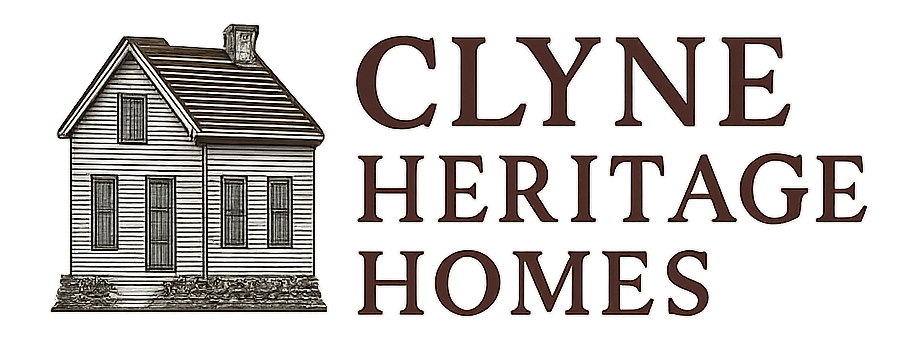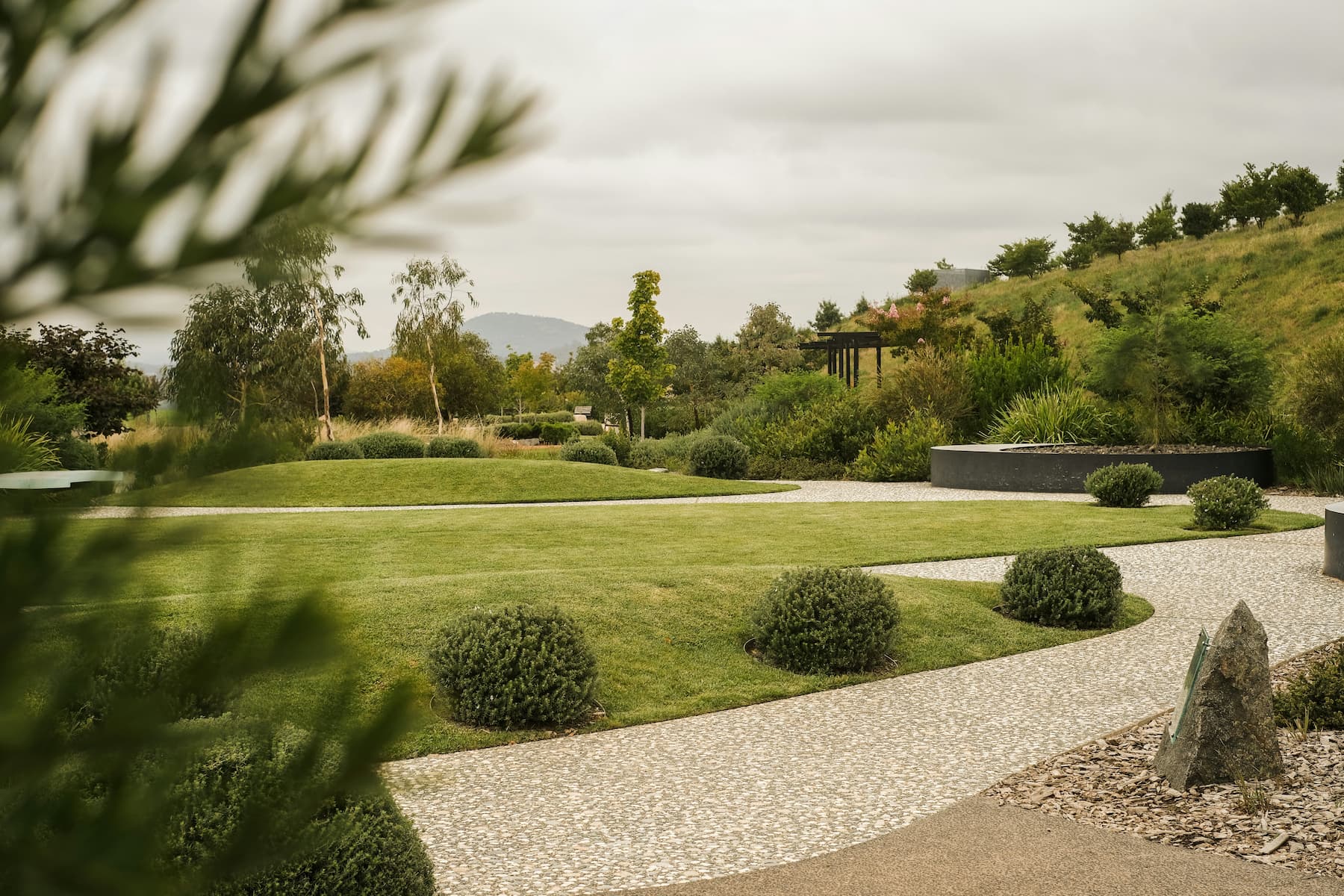The marriage between mid-century architecture and landscape design is no accident. The visionaries who created these distinctive homes in the 1950s and 60s weren’t just designing buildings—they were crafting complete living environments where indoor and outdoor spaces worked in harmony. The expansive glass walls, sliding doors, and thoughtful orientation of these homes intentionally blurred the boundaries between inside and outside, making the landscape an extension of the living space.
Today, as we restore and preserve these architectural gems, the surrounding landscape deserves the same careful consideration as the structure itself. A period-appropriate landscape doesn’t just enhance the home’s aesthetic—it completes the architect’s original vision and creates a cohesive mid-century experience.
Understanding Mid-Century Landscape Philosophy
Mid-century landscape design followed several key principles that differentiated it from earlier and later approaches:
Integration with Architecture
Unlike the clearly delineated Victorian garden or the manicured formality of earlier estates, mid-century landscapes were designed to visually connect with the home’s architecture. This integration was achieved through:
- Extending interior flooring materials to outdoor patios
- Aligning outdoor spaces with interior room divisions
- Using complementary geometric forms in both building and landscape
- Creating framed views from key interior spaces
Functional Outdoor Living
The post-war boom in outdoor recreation and casual entertaining influenced mid-century landscape design significantly:
- Dedicated cooking and dining areas
- Conversation pits and built-in seating
- Swimming pools and water features
- Activity zones for family recreation
Simplified Plant Palette
Mid-century landscapes typically featured:
- Architectural plants with strong forms and minimal maintenance
- Mass plantings of single species rather than Victorian-style mixed borders
- Strategic use of specimen plants as living sculptures
- Reduction or elimination of traditional lawns in favor of ground covers
Celebration of Regional Character
While International Style architecture could appear similar across regions, the best mid-century landscapes emphasized local character:
- Native and climate-appropriate plants
- Regional materials for hardscaping
- Solutions for local climate conditions
- Preservation of existing terrain and natural features
Elements of Mid-Century Landscape Design
To create an authentic mid-century landscape for your heritage home, consider incorporating these characteristic elements:
Hardscape Features
Geometric Paving Patterns The clean lines of mid-century homes were often echoed in distinctive paving patterns:
- Concrete pads with deliberate control joints creating geometric patterns
- Offset rectangular pavers creating rhythmic walkways
- Aggregate concrete with exposed pebbles or terrazzo-like finishes
- Integrated planters breaking up paved areas
Distinctive Walls and Screens Privacy and space definition were often achieved through:
- Decorative concrete block screens (breeze blocks)
- Horizontal slatted wood fencing
- Low walls of stacked stone or roman brick
- Bamboo or reed screens for filtered views
Outdoor Rooms Mid-century landscapes pioneered the concept of defined outdoor rooms:
- Sunken conversation areas mimicking interior conversation pits
- Dedicated outdoor dining spaces with built-in seating
- Outdoor kitchens (ranging from simple built-in grills to complete cooking areas)
- Poolside lounging areas designed for gathering
Water Features Water elements were common but approached with modern sensibilities:
- Geometric pools and spas with clean edges
- Reflecting pools with minimal ornamentation
- Sculptural fountains with architectural forms
- Shallow water features integrated with patios
Plant Selection Strategies
The plant palette for mid-century homes typically emphasized form over flower, with attention to creating year-round visual interest through foliage, bark, and structure.
Signature Mid-Century Plants While regional variations exist, certain plant types became iconic in mid-century landscapes:
Architectural Specimens:
- Bird of Paradise (Strelitzia nicolai) – Bold, paddle-shaped leaves
- Sago Palm (Cycas revoluta) – Prehistoric appearance with symmetrical form
- Dracaena and Cordyline species – Upright, structural forms
- Tree Aloe (Aloe arborescens) – Sculptural, drought-tolerant statement
- Japanese Black Pine (Pinus thunbergii) – Often pruned in cloud-like forms
Textural Accents:
- New Zealand Flax (Phormium tenax) – Sword-like leaves in various colors
- Agave species – Dramatic rosettes of thick, pointed leaves
- Feather Grass (Stipa tenuissima) – Soft movement contrasting with architectural hardscape
- Horsetail Reed (Equisetum hyemale) – Vertical green lines for dramatic effect
- Fan Palm (Chamaerops humilis) – Compact palm with distinctive fan-shaped fronds
Groundcovers:
- Creeping Juniper (Juniperus horizontalis) – Low-maintenance evergreen carpets
- Sedum varieties – Succulent groundcovers with minimal water needs
- Dymondia (Dymondia margaretae) – Tough, walkable alternative to lawns
- Blue Fescue (Festuca glauca) – Mounding blue-gray ornamental grass
- Mondo Grass (Ophiopogon japonicus) – Grass-like appearance in shady areas
Creating Plant Compositions
Mid-century plant design typically followed these arrangements:
- Massed single-species plantings rather than mixed borders
- Rhythmic repetition of key plants to create cohesion
- Strategic placement of specimen plants as focal points
- Layered heights creating visual interest without fussiness
- Strong contrast in form and texture between adjacent plantings
Regional Adaptations
While mid-century modern aesthetics have common elements across regions, authentic period landscapes took advantage of local conditions and materials:
Desert Mid-Century (Southwest/Southern California)
- Celebration of arid-adapted plants like agaves, yuccas, and cacti
- Decorative gravel and decomposed granite instead of lawns
- Strategic shade structures to create outdoor livability
- Minimal supplemental irrigation, relying on drought-adapted species
Woodland Mid-Century (Pacific Northwest/Northeast)
- Integration with existing mature trees
- Use of native understory plants like ferns and woodland perennials
- Moss gardens and shade-tolerant ground covers
- Natural stone elements sourced from local quarries
Tropical Mid-Century (Florida/Gulf Coast)
- Exuberant use of tropical foliage plants
- Integration of natural cooling through strategic tree placement
- Shell or coral-based hardscape materials
- Adaptation to high-rainfall conditions with permeable surfaces
Prairie Mid-Century (Midwest)
- Low-growing landscapes that emphasize horizontal lines
- Native prairie grasses and wildflowers
- Brick and locally-quarried stone hardscaping
- Four-season interest addressing the continental climate
Balancing Authenticity and Sustainability
Creating a period-appropriate landscape doesn’t mean ignoring modern environmental concerns. In fact, many mid-century landscape principles align naturally with contemporary sustainability:
Water Conservation Strategies
- Group plants with similar water needs (a practice already common in mid-century design)
- Replace water-intensive lawns with appropriate groundcovers
- Use permeable paving to reduce runoff
- Install efficient drip irrigation hidden beneath mulch
Climate-Appropriate Choices
- Select native or adapted plants appropriate for your region
- Position deciduous trees to provide summer shade and winter sun
- Create windbreaks where appropriate for energy efficiency
- Minimize high-maintenance plantings requiring excessive resources
Sustainable Materials
- Source local stone and hardscape materials to reduce transportation impacts
- Consider permeable versions of period-appropriate paving
- Use sustainably harvested wood for decks and screens
- Repurpose original hardscape materials when possible
Creating Your Mid-Century Landscape Plan
If you’re ready to develop a landscape that honors your mid-century home’s heritage, consider this process:
1. Research and Documentation
- Locate original landscape plans if available (check with previous owners or local archives)
- Find historical photographs of your home or similar properties in your area
- Research common landscape practices in your region during the mid-century period
- Identify any original landscape elements that may remain on your property
2. Site Analysis
- Note sun patterns, drainage issues, and microclimates
- Identify key views from inside the home that should be enhanced
- Document existing plants and structures
- Assess privacy needs and screening requirements
3. Define Outdoor Rooms
- Identify logical areas for different activities (dining, lounging, recreation)
- Create connections between interior and exterior spaces
- Establish circulation paths that respect the home’s geometry
- Consider how spaces will be used in different seasons
4. Select Appropriate Materials
- Choose hardscape materials that complement the home’s architecture
- Select plant material suited to your climate and the mid-century aesthetic
- Source period-appropriate furnishings or quality reproductions
- Consider lighting that enhances nighttime use while respecting the period
5. Implementation
- Consider phasing the project to manage budget and disruption
- Prioritize structural elements before plantings
- Save mature specimens when possible
- Document your process for future homeowners
Case Study: The Johnson Residence Renewal
When Mark and Sarah purchased their 1959 ranch home in 2020, the landscape had been converted to a conventional suburban layout with little connection to the home’s architectural heritage. Working with a landscape designer familiar with mid-century principles, they developed a three-phase plan:
Phase 1: Hardscape Restoration
- Removed the curved concrete walkways and replaced them with offset rectangular pavers
- Installed a period-appropriate concrete patio with intentional control joints creating a geometric pattern
- Constructed a decorative concrete block screen to define the entry courtyard
Phase 2: Plant Renewal
- Removed overgrown foundation plantings that obscured the home’s clean lines
- Installed masses of architectural plants including New Zealand flax, sago palms, and ornamental grasses
- Created a gravel garden with specimen agaves and low-water ground covers in place of the front lawn
Phase 3: Outdoor Living Enhancement
- Added a simple rectangular fire pit with built-in seating
- Installed period-appropriate exterior lighting to extend outdoor use into evening
- Created a small kitchen garden with raised cor-ten steel beds
The result is a landscape that feels authentic to the home’s era while meeting the needs of contemporary living and environmental responsibility.
Conclusion: Completing the Vision
A thoughtfully designed landscape is essential to experiencing a mid-century home as its architects intended. By applying the principles that guided landscape design during this innovative period, we honor not just the buildings themselves but the complete living environments they were meant to create.
Whether you’re restoring a landscape to its original glory or interpreting mid-century principles for a heritage home that has lost its original surroundings, the goal remains the same: creating outdoor spaces that seamlessly extend the home’s architecture into the landscape, resulting in the indoor-outdoor living that defined this revolutionary period in residential design.
Do you have questions about creating a period-appropriate landscape for your mid-century home? Share your challenges in the comments below, or send us photos of your project for personalized suggestions.



Leave a Reply